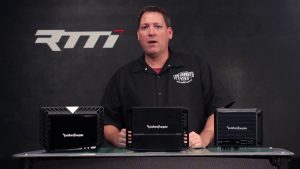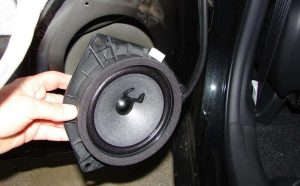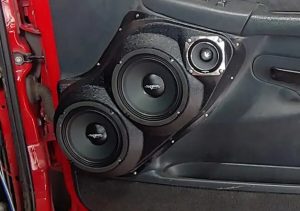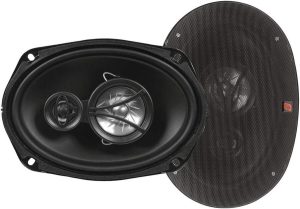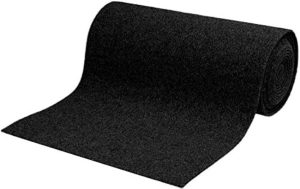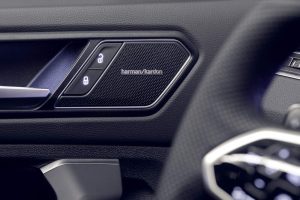Digital Signal Processors (DSPs) are transforming the car audio landscape. They’ve become essential tools for audio enthusiasts who want concert-like sound quality in their vehicles. But what exactly is a DSP in car audio, and why should you care?
Contents
- Understanding DSP in Car Audio
- How DSPs Work in Your Car
- Key Features of Car Audio DSPs
- Benefits of Adding a DSP to Your Car Audio System
- Types of DSPs for Car Audio
- Setting Up Your DSP
- Popular Car Audio DSP Models
- Integrating a DSP in Your System
- Common Questions About Car Audio DSPs
- The Future of Car Audio DSP
- Final Thoughts on Car Audio DSP
Understanding DSP in Car Audio
A Digital Signal Processor (DSP) is a specialized microchip that manipulates digital signals. In car audio systems, DSPs enhance sound quality by applying precise adjustments to audio signals before they reach your speakers.
Think of a DSP as your personal sound engineer that works behind the scenes. It takes the audio signal, processes it according to your preferences, and delivers a refined output that makes your music sound better in your car’s unique acoustic environment.
How DSPs Work in Your Car
Your car isn’t designed as a listening room. It’s filled with odd angles, reflective surfaces, and varying materials that create acoustic challenges. DSPs address these issues through digital manipulation.
When audio signals enter a DSP, they’re converted from analog to digital format (if they aren’t digital already). The processor then applies various algorithms to optimize the sound. After processing, the signal converts back to analog for your amplifiers and speakers.
The digital nature of DSPs allows for precise control that wasn’t possible with older analog processing. You can make adjustments down to fractions of a decibel, ensuring perfect sound calibration.
Key Features of Car Audio DSPs
Time Alignment
Time alignment compensates for speaker distance differences. When speakers are mounted at varying distances from your listening position, sound arrives at different times. This causes phase issues and unclear imaging.
DSPs solve this problem by delaying signals to closer speakers, making all sound reach your ears simultaneously. The result? A well-defined soundstage with accurate instrument positioning.
For example, your door speakers might be 3 feet away while dash speakers are 4 feet away. The DSP adds a slight delay to the door speakers so all sounds arrive at your ears at the perfect time.
Crossover Functions
Crossovers divide audio frequencies between appropriate speakers. Traditional passive crossovers waste power and offer limited adjustment. DSP-based active crossovers operate before amplification, allowing for:
- Steeper slopes (up to 48dB/octave)
- Precise frequency selection
- Independent level control for each driver
- No power loss
This means your tweeters only receive high frequencies, midrange drivers get middle frequencies, and subwoofers handle bass—all with perfect precision.
Equalization (EQ)
Car interiors create frequency response problems. Some frequencies get boosted while others get cut. DSP equalization corrects these issues with parametric EQ bands.
Unlike basic tone controls, parametric EQ lets you:
- Select exact frequency points
- Adjust the width of frequency adjustment (Q factor)
- Cut or boost by precise amounts
High-end DSPs offer 31+ bands of equalization per channel, giving you studio-level control of your sound.
Phase Control
Phase control adjusts timing relationships between speakers. When speakers operate out of phase, they can cancel each other out, causing weak bass and poor imaging.
DSPs allow phase adjustments in precise increments, sometimes even continuous adjustment from 0-180 degrees. This helps integrate subwoofers with other speakers and fix crossover region issues.
Benefits of Adding a DSP to Your Car Audio System
Superior Sound Quality
The most obvious benefit is dramatically improved sound quality. DSPs help overcome car acoustics limitations, delivering clearer vocals, tighter bass, and more detailed high frequencies.
Users often describe the difference as “removing a blanket from the speakers.” Suddenly, you hear details in familiar songs that you never noticed before.
Flexibility with Speaker Placement
Cars rarely allow optimal speaker placement. DSPs compensate for non-ideal locations through time alignment and equalization. This means you can work with factory speaker locations while still achieving excellent sound.
Maximizing Existing Equipment
Before upgrading speakers or amplifiers, consider adding a DSP. Many audio enthusiasts discover their existing components sound significantly better when properly processed. A DSP can breathe new life into an otherwise average system.
Factory Integration
Modern vehicle audio systems often include complex factory integration with vehicle functions. DSPs designed for factory integration can preserve these features while improving sound quality.
Products like the AudioControl DM-810 can accept factory signals, clean them up, and send them to aftermarket amplifiers—giving you the best of both worlds.
Types of DSPs for Car Audio
Standalone DSP Units
Standalone processors offer the most flexibility and processing power. Units from brands like Audison, Helix, and AudioControl connect between your head unit and amplifiers. They typically feature:
- Multiple input/output options
- Advanced software control
- Preset storage
- Remote control options
These units provide the highest level of adjustment but require more complex installation.
Amplifiers with Built-in DSP
For simpler installations, many manufacturers offer amplifiers with integrated DSP functions. These combine processing and amplification in one chassis, reducing wiring complexity and installation space.
Examples include JL Audio’s VXi amplifiers and Rockford Fosgate’s Power series with integrated DSP.
Head Units with DSP
Some higher-end head units include DSP functionality. While not as comprehensive as standalone units, they offer convenience for those who want processing without additional components.
Pioneer’s NEX series and Kenwood’s eXcelon reference units include respectable DSP capabilities built right in.
Setting Up Your DSP
Basic Setup Process
Setting up a DSP might seem intimidating, but the process follows logical steps:
- Initial settings: Start with all EQ flat, crossovers at recommended points, and no time alignment
- Set crossovers: Protect drivers by establishing safe frequency limits
- Basic level matching: Balance levels between different speakers
- Time alignment: Measure speaker distances and set delays
- Equalization: Address frequency response issues
- Fine-tuning: Make small adjustments while listening to familiar music
Professional Tuning vs. DIY
While many enthusiasts tune their systems, professional tuning offers advantages:
- Experience with different car acoustics
- Reference measurement equipment
- Trained ears for subtle adjustments
- Knowledge of processing limitations
A professional tuner might charge $200-500, but their expertise can extract maximum performance from your system. Many shops include tuning with DSP installation.
That said, modern DSPs with auto-calibration features make DIY tuning more accessible than ever. Units like the Audison bit One HD Virtuoso can take measurements and suggest settings automatically.
Popular Car Audio DSP Models
Entry-Level Options
For those new to DSP, several affordable options provide excellent value:
- miniDSP C-DSP 8×12 V2: Offers 8 inputs, 12 outputs, and comprehensive control at a reasonable price point
- Dayton Audio DSP-408: Budget-friendly with 4 inputs, 8 outputs and surprisingly good performance
- JL Audio TwK-88: User-friendly software with solid processing capabilities
These units typically range from $200-500 and provide dramatic improvements over no processing.
Mid-Range DSPs
Stepping up in budget brings more features and processing power:
- AudioControl DM-810: Factory integration specialist with excellent signal restoration
- Helix DSP.3: German engineering with outstanding sound quality and flexibility
- Mosconi 6to8 Aerospace: Italian craftsmanship with intuitive software
Mid-range options ($500-900) offer better components, more channels, and refined software interfaces.
High-End Processors
For no-compromise systems, flagship processors deliver studio-grade processing:
- Audison bit One HD Virtuoso: 13 inputs, 13 outputs, 192kHz/24-bit processing
- Helix Ultra: The pinnacle of car audio processing with extensive connectivity
- Zapco ADSP-Z8 IV-8: Audiophile-grade components with patented processing algorithms
Premium processors ($1000+) justify their cost through superior components, better converters, and future-proof feature sets.
Integrating a DSP in Your System
Signal Flow Planning
Before purchasing a DSP, plan your signal flow:
- Identify your source unit outputs (RCA, speaker level, optical, etc.)
- Determine how many channels you need to process
- Map which outputs will feed which amplifier channels
- Consider future expansion needs
This planning prevents compatibility issues and ensures you select the right processor for your needs.
Installation Considerations
Physical installation requires attention to several factors:
- Power requirements: Clean power prevents noise issues
- Grounding point: A solid ground connection is essential
- Signal cable routing: Keep signal cables away from power wires
- Mounting location: Accessibility for tuning vs. concealment for security
- Heat management: Adequate ventilation prevents thermal issues
Many enthusiasts hide their DSP under seats or in trunks, using remote controllers or smartphone apps for adjustments.
Software and Control Options
Modern DSPs offer various control methods:
- Computer software: Most comprehensive for initial setup
- Smartphone apps: Convenient for on-the-go adjustments
- Hardware controllers: Knobs and buttons for common adjustments
- Presets: Store different settings for various music genres
The best systems combine these options, allowing detailed setup via computer and convenient adjustments through controllers or apps.
Common Questions About Car Audio DSPs
“Do I really need a DSP?”
If you care about sound quality in your car, a DSP provides benefits that no other component can match. Even modest speakers sound better with proper processing. For audio enthusiasts, a DSP isn’t optional—it’s essential.
“Will a DSP work with my factory stereo?”
Yes! Many DSPs accept speaker-level inputs from factory head units. Some even preserve factory features like chimes, Bluetooth calling, and audio from entertainment systems.
“Can DSP fix bad speakers or poor installation?”
While DSP works wonders, it can’t completely fix fundamentally flawed components or installations. Think of it as making good systems great, not making bad systems good. Basic acoustic treatments and proper installation remain important.
The Future of Car Audio DSP
Car audio processing continues to evolve. Recent trends include:
- Automatic room correction algorithms
- Wireless connectivity for updates and control
- Integration with digital music sources
- Virtual reality-based tuning interfaces
- AI-assisted optimization
As processing power increases and costs decrease, expect DSP to become standard even in mid-range car audio systems.
Final Thoughts on Car Audio DSP
Digital Signal Processors represent the single most impactful upgrade for car audio sound quality. They address the fundamental acoustic challenges of automotive environments while providing precision that analog processing can’t match.
Whether you’re building a competition-level system or simply want better sound from your daily driver, a DSP deserves serious consideration. The ability to transform your driving experience through dramatically improved audio makes DSP the hidden hero of car audio systems.
Start with understanding your needs, select appropriate equipment, and either learn basic tuning principles or work with professionals. The results will change how you experience music in your vehicle forever.

